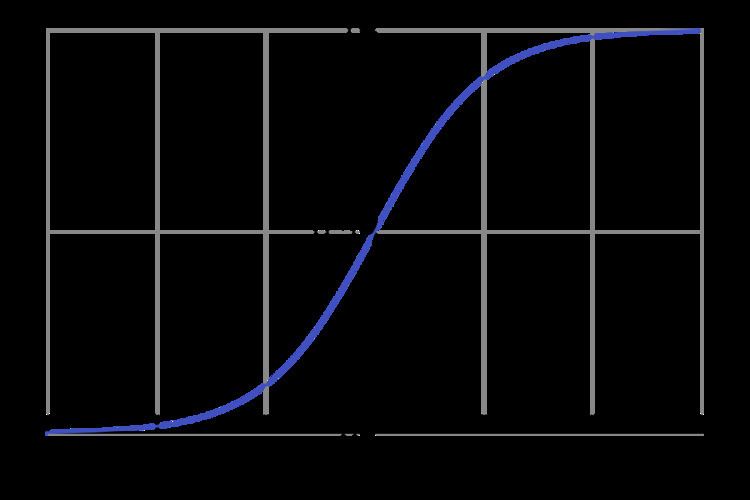 | ||
A sigmoid function is a mathematical function having an "S" shaped curve (sigmoid curve). Often, sigmoid function refers to the special case of the logistic function shown in the first figure and defined by the formula
Contents
Other examples of similar shapes include the Gompertz curve (used in modeling systems that saturate at large values of t) and the ogee curve (used in the spillway of some dams). Sigmoid functions have finite limits at negative infinity and infinity, most often going either from 0 to 1 or from −1 to 1, depending on convention.
A wide variety of sigmoid functions have been used as the activation function of artificial neurons, including the logistic and hyperbolic tangent functions. Sigmoid curves are also common in statistics as cumulative distribution functions (which go from 0 to 1), such as the integrals of the logistic distribution, the normal distribution, and Student's t probability density functions.
Definition
A sigmoid function is a bounded differentiable real function that is defined for all real input values and has a positive derivative at each point.
Properties
In general, a sigmoid function is real-valued and differentiable, having either a non-negative or non-positive first derivative which is bell shaped. There are also a pair of horizontal asymptotes as
The logistic function has this further, important property, that its derivative can be expressed by the function itself,
Examples
Many natural processes, such as those of complex system learning curves, exhibit a progression from small beginnings that accelerates and approaches a climax over time. When a detailed description is lacking, a sigmoid function is often used.
Besides the logistic function, sigmoid functions include the ordinary arctangent, the hyperbolic tangent, the Gudermannian function, and the error function, but also the generalised logistic function and algebraic functions like
The integral of any smooth, positive, "bump-shaped" function will be sigmoidal, thus the cumulative distribution functions for many common probability distributions are sigmoidal. The most famous such example is the error function, which is related to the cumulative distribution function (CDF) of a normal distribution.
